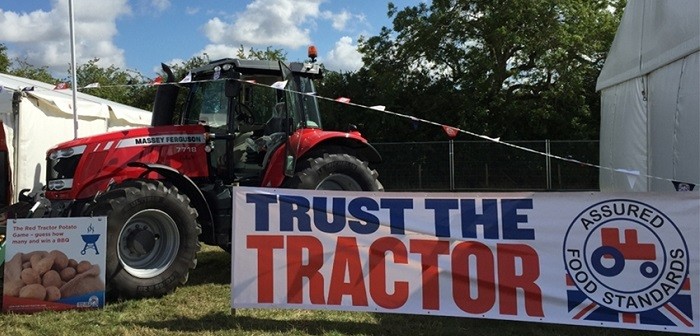Red Tractor pork standards are changing this autumn, with most of the key changes coming in from October 1. Here is a summary of what you need to know.
Antibiotic recording
 One of the headline amendments is the new requirement for producers to upload total antibiotic use to the electronic medicine book, eMB-Pigs, on a quarterly basis within six weeks of the end of each quarter. This will take effect from November 11, at which point scheme members will need to have entered data from the second and third quarters of 2017.
One of the headline amendments is the new requirement for producers to upload total antibiotic use to the electronic medicine book, eMB-Pigs, on a quarterly basis within six weeks of the end of each quarter. This will take effect from November 11, at which point scheme members will need to have entered data from the second and third quarters of 2017.
NPA and AHDB Pork have been urging producers to ensure they upload the data in plenty of time. Kate Ward, AHDB Pork’s veterinary manager, said: “We are here to help, but producers are urged to submit their data as early as possible, to ensure they are happy and familiar with the process giving time for any problems to be resolved before the November deadline.”
The rest of the changes summarised below take effect from October 1.
Responsible use of medicines
In addition to the new e-MB requirement, vets are required to sign a quarterly declaration to confirm they are prescribing antibiotics in accordance with the PVS Prescribing Principles for Antimicrobials. Class 3 antibiotic use must be justified in the veterinary health plan.
Notching
Routine multiple ear notching is not allowed and the practice can only be used as a last resort in pedigree breeding where pig colouring prevents tattooing and only with recommendation from a vet.
Imported stock and semen testing
Imported stock and semen must be tested in line with the NPA’s imports protocols for non-statutory diseases and a statement signed by a vet.
Biosecurity
The farm’s biosecure areas must be defined on a map and all visitor entry points must have disinfectant foot dips or boot cleaners. Staff and visitors must wear clean clothes and footwear in biosecure areas of the farm.
Supplementary rearing accommodation
If a piglet has to be removed from the sow for its own welfare at earlier than 21 days, a vet must confirm that the management of any supplementary rearing accommodation is satisfactory.
Feed and water
An action plan needs to be created for dealing with unweaned piglets over two weeks of age where the sow’s milk may not satisfy the piglets’ water needs where water is not continuously available. In growing and finishing units, drinkers integral to a wet and dry feeding system are not counted as a separate water source. Non-mains water must be independently tested every year.
Environment
The environmental protection section has no significant changes but is now more appropriate for livestock farmers and has been divided in to two areas; the responsible use of agri-chemicals and nutrient management.
Farm map
A map should show the unit’s buildings, fields, watercourses and high pollution risk areas.
Rodenticide use
Permanent baiting must not be routinely undertaken and baits can only be sited where evidence shows they are being continuously effective. A site survey and risk assessment of watercourses and populations of non-target species should also be carried out and recorded before treatment. This ensures assured farmers can buy professional rodenticides without further proof of competence.
The above covers the main changes to the standards but there are others. Full details, including a checklist outlining all the changes and the full set of standards, are available here




